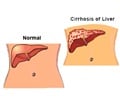
Lead author Mary-Louise Risher said that in the eyes of the law, once people reach the age of 18, they are considered adult, but the brain continues to mature and refine all the way into the mid-20s, adding it’s important for young people to know that when they drink heavily during this period of development, there could be changes occurring that have a lasting impact on memory and other cognitive functions.
Risher and colleagues, including senior author Scott Swartzwelder periodically exposed young rodents to a level of alcohol during adolescence that, in humans, would result in impairment, but not sedation. Afterward, these animals received no further exposure to alcohol, and grew into adulthood that occurred in rats within 24 to 29 days.
Using small electrical stimuli applied to the hippocampus, the Duke team measured a cellular mechanism called long-term potentiation, or LTP, which is the strengthening of brain synapses as they are used to learn new tasks or conjure memories.
Learning occurs best when this synaptic activity is vigorous enough to build strong signal transmissions between neurons. LTP is highest in the young, and effective learning is crucial for adolescents to acquire large amounts of new memory during the transition to adulthood.
The researchers expected they would find abnormally diminished LTP in the adult rats that had been exposed to alcohol during their adolescence. Surprisingly, however, LTP was actually hyperactive in these animals compared to the unexposed rodents.
Advertisement
The study appears in the journal Alcoholism: Clinical and Experimental Research.
Advertisement











